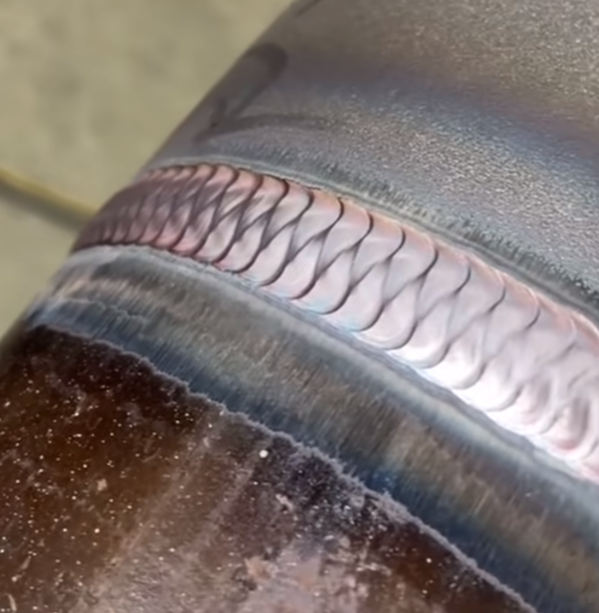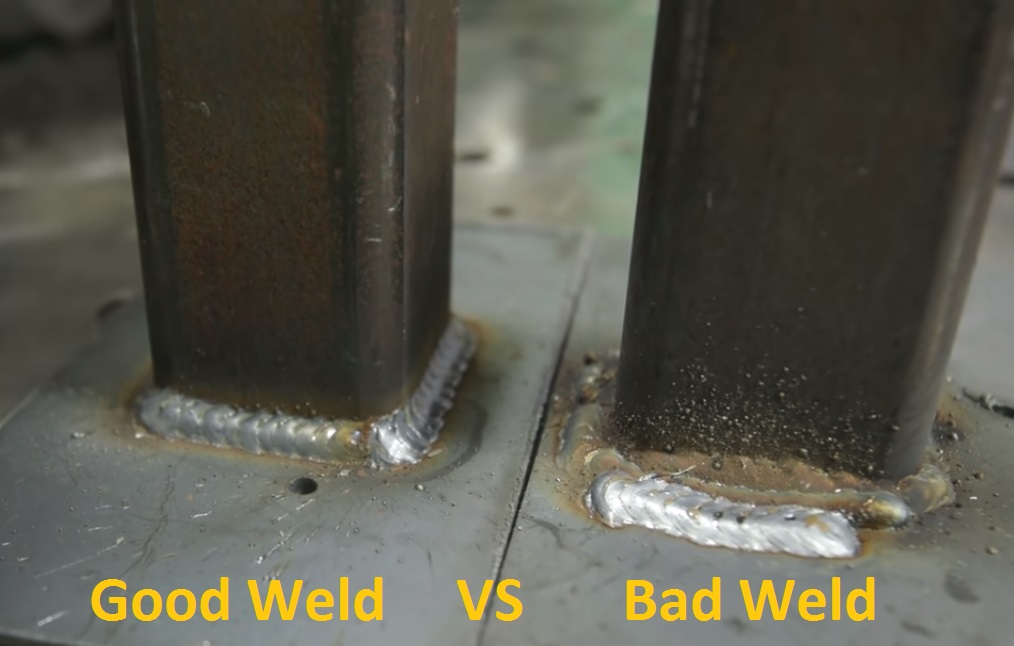Introduction of Good Weld Vs Bad Weld
One must be very clear when spotting a good weld and bad weld. Good and bad welding determines how much you are professional and have grown as a welder. Here we have come up with in-depth information on the bad weld and good weld. You can check out the details and see which signs signify a good and bad weld.
To give you a rough idea! A good weld always shows a uniform welding bead with no cracks and holes. On the other hand, if it is a poor-quality weld, you will likely spot holes, cracks, and a lack of uniformity. Bad weld exhibits insufficient and worst penetration of the work pieces. You will often find large globs of melted metal around the weld.
Signs Of a Good Weld

Undoubtedly, welding is a challenging skill that takes a lot of time to learn and perfect. Beginner-level welders often weld poorly, but with practice, they become highly accurate and professional in welding metal. Below you can see the important signs of a good weld:
- The overall weld will look super-smooth, uniform, and finished in terms of appearance.
- The weld will show no patterns, cracks, holes, or discoloration.
- There will be no slags on the weld bead.
- Slight amount of discoloration right there on the base metal.
- Good weld produces a flat bead profile, which will neither look concave nor convex.
- The welded material shows a uniform and 100% straight appearance and a complete absence of dips or craters.
Signs of a bad weld
With time, training, and heavy practice, you can definitely transform your bad welding into a pro and expert-looking one. Right now, you can go through the basic signs which hint at bad welding:
- A bad weld produces an exceedingly thin welding bead or line.
- The parent metal shows no discoloration.
- Cracks, holes, and slag will appear along with the bead.
- There will certainly be a lack of uniformity on the welding line.
- The joined structure remains deficient in strength.
Different Welding Techniques And Signs Of Good Weld Vs Bad Weld Associated With Them
We have highlighted a few of the important welding techniques which tell what a good or bad weld is according to them:
Stick Welding

Learning and becoming a pro in stick welding has always been less challenging! The welder interacts with various materials during stick welding, including alloy steel, carbon steel, and iron. You will also weld copper, aluminum, and nickel in this same category.
What is a good stick weld?
A good stick weld is assumed to display a uniform, smooth and straight appearance. You might not spot any drops of slag/spatter. In addition, a good stick weld shows no cracks, holes, or breaks in the bead.
What is a bad stick weld?
A bad stick weld shows a visible spatter, lots of holes, and cracking. Furthermore, you will see undercutting and breaks in the welded bead. The bead width remains inconsistent as well.
TIG Welding
We all know that TIG is abbreviated as tungsten inert gas welding. This respective welding type undoubtedly seems very hard and tough to learn. It certainly requires more skill, patience, time, and dedication from the welder side. With proficient skills, you can make TIG welds accurately and cleanly.
What is a good TIG weld?

A clean and highly accurate, precise TIG weld keeps the tiny welds smoothly layered on top of each other. You will not spot any slag or burnout. Overall, the welded metal looks visually appealing.
What is a bad TIG weld?
The presence of a flat bead that looks very wide and shows no distinct and uniform pattern- means that it is a bad and not-so-clean TIG weld! In addition, the overlaid weld pattern ultimately steps out of the line.
MIG Welding
MIG welding has become the common welding process that can easily be performed at homes. This respective technique is used to weld thin types of metals, including mild steel and aluminum.
What is a good MIG weld?
A perfect MIG weld remains straight and uniform. It shows no slag or holes and none of the problems related to cracking. The weld displays no breaks, craters, or dips in the bead.
What is a bad MIG weld?
Cracking is an important sign which immediately tells that you have done MIG welding poorly. Furthermore, lack of uniformity or dips causes the welded bead to lack smoothness, straightness, and the proper strength.
Oxy Welding Or Gas Welding
Oxy welding, at times known as gas welding, is conducted for metal cutting. You can opt for this technique to weld delicate aluminum parts. Besides, you can prefer doing gas welding for brazing soft metals, including bronze and copper.
What is a good oxy weld?
A perfect and super-precise oxy weld shows a uniform bead with no cracks, holes, or globules.
What is a bad oxy weld?
A poorly conducted oxy weld has holes and needs more smoothness and uniformity. There will be insufficient penetration of the metal pieces. The welded material remains surrounded by large globs of melted metal.
Bonus Tips To Prevent Bad Weld
Conclusion
That is it from our side! Hopefully, you have understood how a good and bad weld differs. You do not need to worry if you make bad welds in the initial phase of your welding career. With time and practice, you can attain hands-on perfection in this skill. Please stay connected with us!
